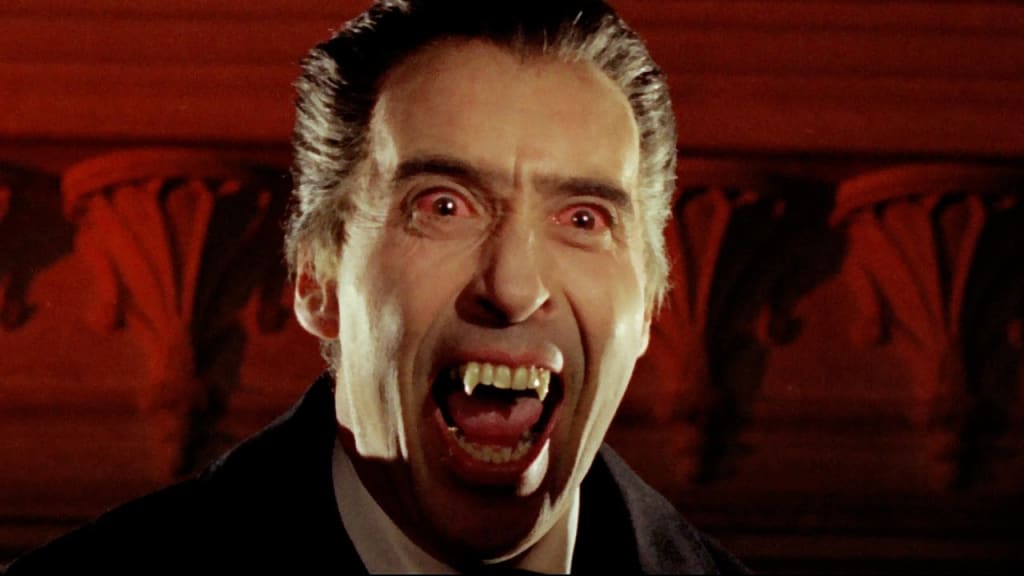Vampires: The evolution of good versus evil and changing views on the undead.
Much is different today from the time since Bram Stoker first penned his tories about Dracula. He probably would not recognize today's versions of his work.

It's October and time for the vampire movies to abound on the small screen. There have been man adaptations of the story of good versus evil and the power of the Divine triumphing over the prince of darkness. There were several black and white versions of vampire stories but for many there are two men whose roles will always stick out as being the best portrayal of the thrilling story. Peter Cushing portrayed Van Helsing in the early Dracula movies of the 1960s and 1970s and Sir Christopher Lee was the iconic vampire. Once during an interview, Lee told a journalist the following his costar:
“He should have been a priest… Because there is a great love for his fellow man. He’s also a deeply religious man. Those are the two things we don’t have in common. “I’m afraid I do say what I think. I’m not tactless but I am a more direct person than he is. I don’t have his tolerance. I don’t have his gentleness. I don’t have his faith; I wish I did…” These two men have thrilled moviegoers for decades as the king of vampires and the man who was destined to destroy him. Off-screen Cushing and Lee were good friends for many years.

In the days of Cushing and Lee, everything was cut and dry regarding the undead. Vampires were evil and could be overcome with a stake through the heart, sunlight, and a cross. If a potential victim was not wearing a crucifix, the shadow of a windmill or two oblong objects one crossed over the other would destroy Dracula and his ilk. Bram Stoker first wrote about Dracula in 1897 and good overcame evil for more than 100 years. When Frank Langella took over the title role in the 1979 version of Dracula, the film stayed true to what viewers were already used to seeing. No one knew that all of this was about to change.
The first time I saw a movie that veered from Stoker's version was The Little Vampire in 2000. In this story, a vampire family only drinks animal blood and have a desire to become human. There is sympathy for them and the vampire chaser is the one who meets a violent death. Near the end of the film, there is a scene where a cross is tossed aside in order to save the little vampire. In Stoker's Dracula, the cross represents Divine power which always triumphs over evil. Garlic, sunlight, and wooden stakes also play a part in destroying the undead.

In Stoker's writings, Vampires are adults and because they are undead are neither living nor are their spirits at peace. They are caught between realms and when stakes are hammered through their hearts, they lose their fangs and become human but they do not come back to life. Their souls however are at rest in death. In The Little Vampire, the title character and his family are turned into humans and live as others do. Now we come to The Twilight series which began in 2008. The books and movies glamorize Vampires, elicits empathy for them, and make them lovable, even desirable.

All of this deviates from Stoker's premise that the undead are evil and must be destroyed by having evil to be overcome with good. Life evolves and lines get blurred and I am sure Bram Stoker never dreamed of a world where the ungodly evil villain in his stories would one day become heroes. It is believed that Bram Stoker drew inspiration for the blood-sucking Count from popular Central European folktales about the nosferatu (“undead”). It is also believed that he might have been influenced by historical accounts of Vlad the Impaler,(Vlad Tepes) the 15th-century Romanian prince. He was born in Transylvania and was the second son of the nobleman Vlad II Dracul.

Young Vlad was initiated into a secret order of Christian Knights who were known as the Order of the Dragon. At this time, he decided to take the name Dracula, which means “son of Dracul.” (In Romanian, Dracul means “dragon.” He is said to have employed brutal tactics against his enemies, including mutilation, torture, and mass murder. Vlad is also said to have engaged in decapitation, disembowelment, and skinning or boiling his victims alive. His preferred method of operation however was said to be was impalement. He would drive a wooden stake through the bodies and leave them in the elements to die of exposure.
In 1462, during his campaign against Ottoman invaders, Vlad was reported to have had as many as 20,000 victims who were impaled on the banks of the Danube river. Whatever the inspiration, Stoker created an undead bloodsucker who was to be feared and vanquished. Transylvania is filled with legend, folklore, and myths regarding witches, werewolves, and vampires and this too no doubt played a part in giving Stoker ideas for Dracula. The Little Vampire and the Twilight Saga are a whole different animal but many who enjoy Stoker's work will always enjoy the way he wrote the dark prince in 1987.
About the Creator
Cheryl E Preston
Cheryl is a widow who enjoys writing about current events, soap spoilers and baby boomer nostalgia. Tips are greatly appreciated.






Comments
There are no comments for this story
Be the first to respond and start the conversation.